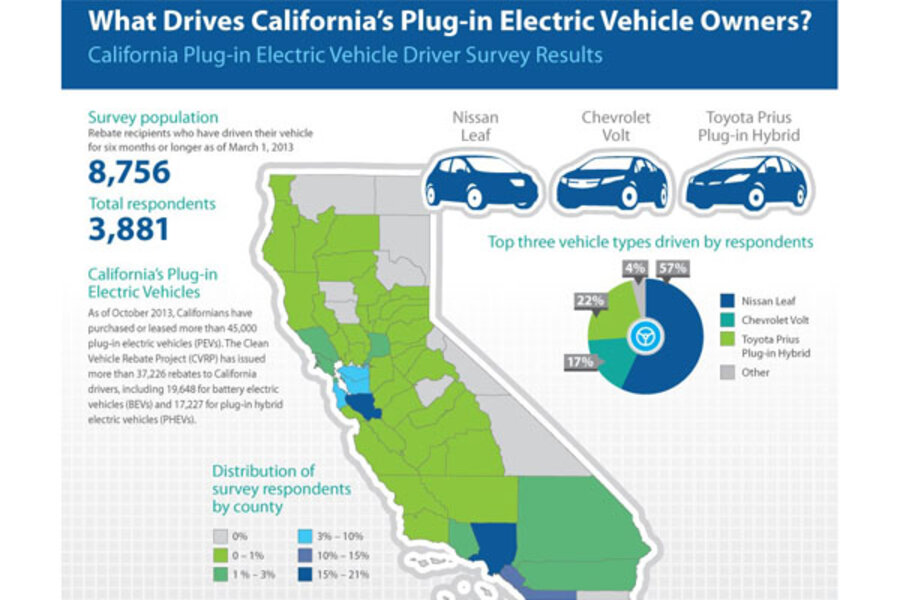Survey: More workplace options for charging electric cars
Loading...
Within two or three months, there will be more than 200,000 plug-in electric cars on U.S. roads--and we're learning more about who buys them, and why.
California's Center for Sustainable Energy released a new report this month that depicts the owners of different models having different reasons for their purchases.
As neatly summarized in the Center's press release last week, the differences can be broken down partly by the type of vehicle.
Those span battery-electric vehicles like the Nissan Leaf, range-extended electrics like the Chevrolet Volt, and plug-in hybrids like the Toyota Prius Plug-In Hybrid (along with Ford's C-Max and Fusion Energi models and a small handful of Honda Accord Plug-In Hybrids as well).
For the all-electric Leaf drivers, according to the Center, environmental reasons--eliminating emissions and reducing the carbon footprint of driving--were the main motivators.
Chevy Volt drivers, who have rated electric ranges of 35 to 38 miles, say that saving money on gasoline prompted their purchase.
And plug-in Prius drivers cited single-occupant access to carpool lanes on California's notoriously crowded freeways as the driving force for buying their cars, which have a rated electric range of only 11 miles (and continuous range of only 6 miles, according to the EPA).
Other findings from the study:
- Almost half the survey's respondents now have access to workplace charging--three-quarters of those at no cost to the driver
- Very few Prius Plug-In Hybrid drivers have 240-Volt Level 2 charging stations at their homes; Volt owners are more than four times as likely to have such a station
- HOV-Lane access counted a lot for all plug-in electric drivers, with 59 percent calling it "very" or "extremely" important, and 84 percent of the group display the sticker
- Satisfaction with public charging infrastructure continues to be low--only 29 percent call it adequate--although that has risen from 17 percent in a prior study
It's worth noting that the data is now almost a year old, with the 8,756 survey respondents having owned their plug-in electric car for at least six months as of March 1, 2013--a year ago tomorrow.
That largely explains why the Tesla Model S is not even mentioned.
As of September 1, 2012, the Leaf, Volt, and Prius Plug-In were the only volume plug-in cars sold (along with a handful of low-volume and compliance models). Those three cars made up 96 percent of the vehicles owned by the survey participants.
The full report can be downloaded here.







